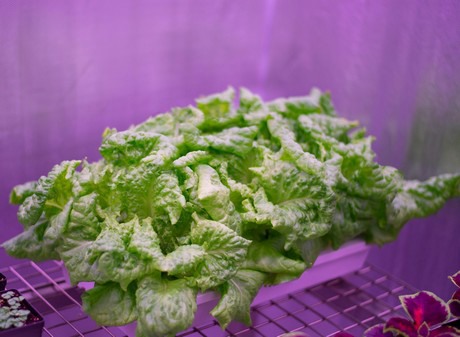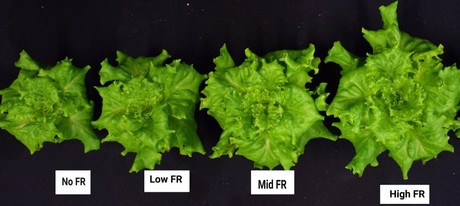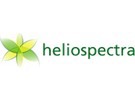One of the exciting features of LED grow lights is the ability to customize spectrums of light to fit various plant growth applications. Therefore understanding the relationship between light and plant growth is key for healthy, high-quality crop production.
Plants do not only utilize light for photosynthesis, but different light spectrums can be used to promote different growth responses in plants, at different growth stages.

Researching the effect of far-red
A research study was conducted by Heliospectra’s Plant and Light Experts on the effect of a Far-red enriched spectra on Black-Seeded Simpson. The purpose of the research was to study the effect of Far-red enriched spectrum on lettuce in a sole-source light environment.
The Far-red wavelength peaks around 735 nm, this waveband is not included in Photosynthetically active radiation (PAR) which range from 400-700 nm but has been proven to steer growth responses in plants.
The research was conducted in Heliospectra’s plant lab using Heliospectra’s fully adjustable Elixia LED grow light. The lights have the ability to control and monitor provide growers with full control over the composition of the spectrum, intensity, and duration, giving growers the possibility to create their own light strategies.
The lettuce was seeded in 7x7 cm (2.7x2.7 in) pots with a mix of soil substrate and vermiculite. Four days after germination pots containing one plant were placed into a LED growth unit (1.4-m², 15ft² open area) with reflective curtains. The plants were grown under four different spectra, all with the same light intensity (200 mol/m2/s) and spectral composition within PAR (red, blue and white wavelengths), three of the four spectra had additional Far-red added to their spectrum at different intensities (Low, Mid, and High).
The lettuce were grown under LED light for a total of 22 days and the experiment was repeated 3 times.
Clear visual difference
At harvest, 5 pots per treatment were collected and measured. The lettuce head diameter was measured with accuracy of 0.5 cm with a ruler, and fresh weight were taken per plant with a scale (Mettler P1200).
A clear difference could be seen in height and size of the lettuce at harvest depending on the light strategy. With the head diameter and weight increased proportionately to the increase of amount of Far-red used.

These results indicate that far-red added to the spectrum has great impact on the growth of Black-Seeded Simpson lettuce. In a controlled sole-source environment, the spectral quality is of high importance, and gives growers a real potential to steer the visual appearance of the crop grown to fit their production goals.
Click here to download a summary of the test.
 For more information:
For more information:Box 5401 SE-402 29 Göteborg Sweden
Phone: +46 31 40 67 10
Fax: +46 31 83 37 82
info@heliospectra.com
www.heliospectra.com
